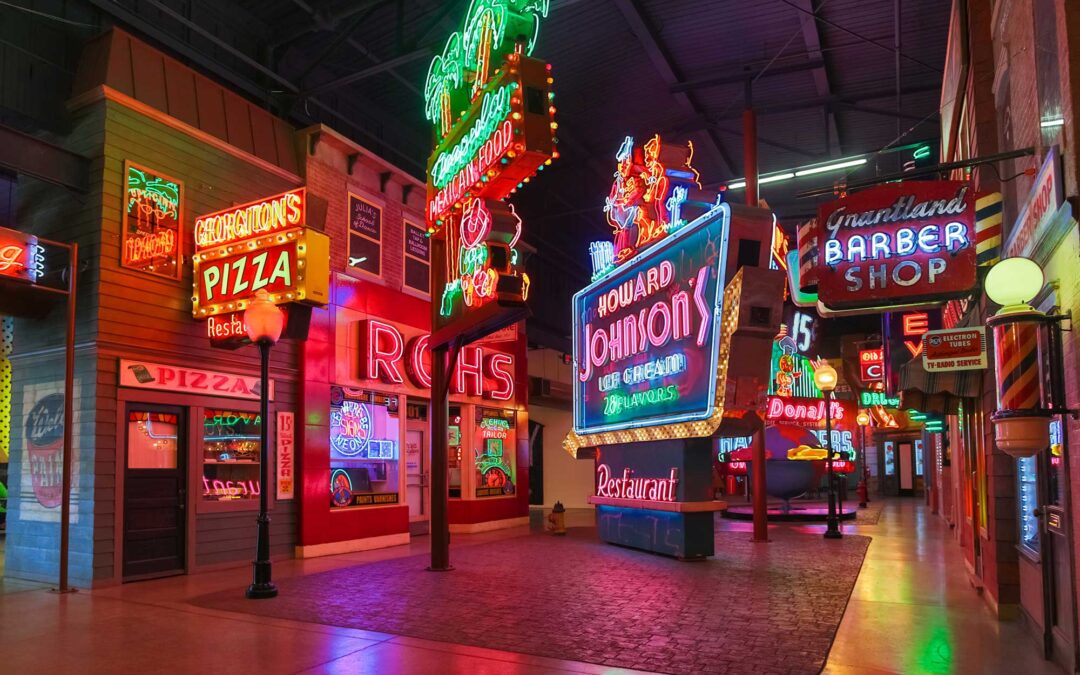The interior of the American Sign Museum in Cincinnatti, OH. (Image courtesy of The American Sign Museum)
September 2025
Cover Story
That nifty neon
Neon signs brightly beckon our collective nostalgia
by Corbin Crable
Petula Clark’s 1964 hit song “Downtown” made neon signs the nucleus of a dizzying world of excitement and thrills. Sing along if you know the words:
Just listen to the music of the traffic in the city
Linger on the sidewalk where the neon signs are pretty
How can you lose?
The lights are much brighter there
You can forget all your troubles, forget all your cares
So go downtown
Things will be great when you’re downtown
No finer place for sure, downtown
Everything’s waiting for you
By the time Clark’s now-iconic ditty made the Billboard Top 100, Vegas Vic had been beckoning travelers to the Las Vegas Strip for more than a decade. And though Sin City is synonymous with the electric hum of neon signs, it’s got some colorful competition in Cincinnatti, Ohio, which, like Vegas, boasts a museum entirely devoted to vintage signage. More on that later. First, let’s take a few steps backward in time as we examine the history of neon signs.
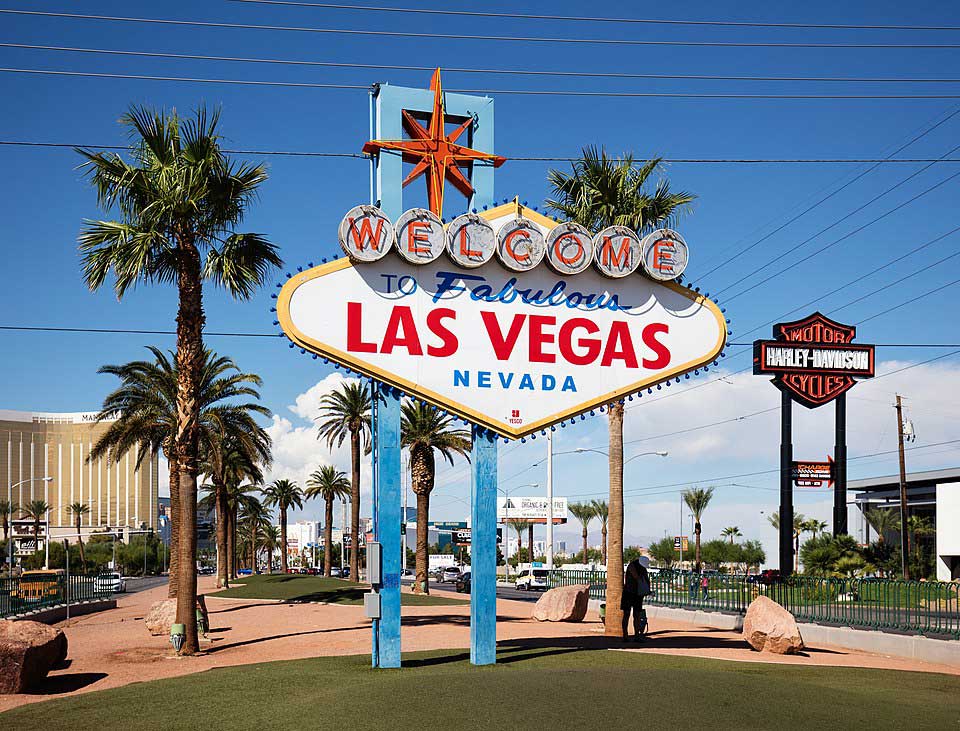
Welcome to Fabulous Las Vegas sign
The iconic Welcome to Fabulous Las Vegas sign, on the southern end of the Strip, was designed in 1959. (Image courtesy of Wikimedia Commons)
This story’s a real gas
Neon gas, found only in trace amounts in the Earth’s atmosphere, emits “a striking, reddish-orange glow” when electrified inside a sealed glass tube, according to the UK-based blog Neon Creations. Though the British can claim the discovery of neon in 1898, it was nearly five years later when French engineer Georges Claude invented neon lamps by applying high voltage to sealed glass tubes filled with neon gas. By 1910, Claude had demonstrated the first neon sign in Paris for a local business.
We here in the United States were first exposed to these new signs in the early 1920s, purchased for a Los Angeles car dealership.
“From there, neon exploded in popularity across major U.S. cities, lighting up iconic spots like Times Square in New York and the casinos of Las Vegas,” according to Neon Creations. “Neon signs became symbols of innovation, nightlife, and glamour throughout the 1920s and 1930s.”
And, like nearly every technological innovation in the early 1940s, production of neon signs was paused in the interest of the U.S. and European war effort.
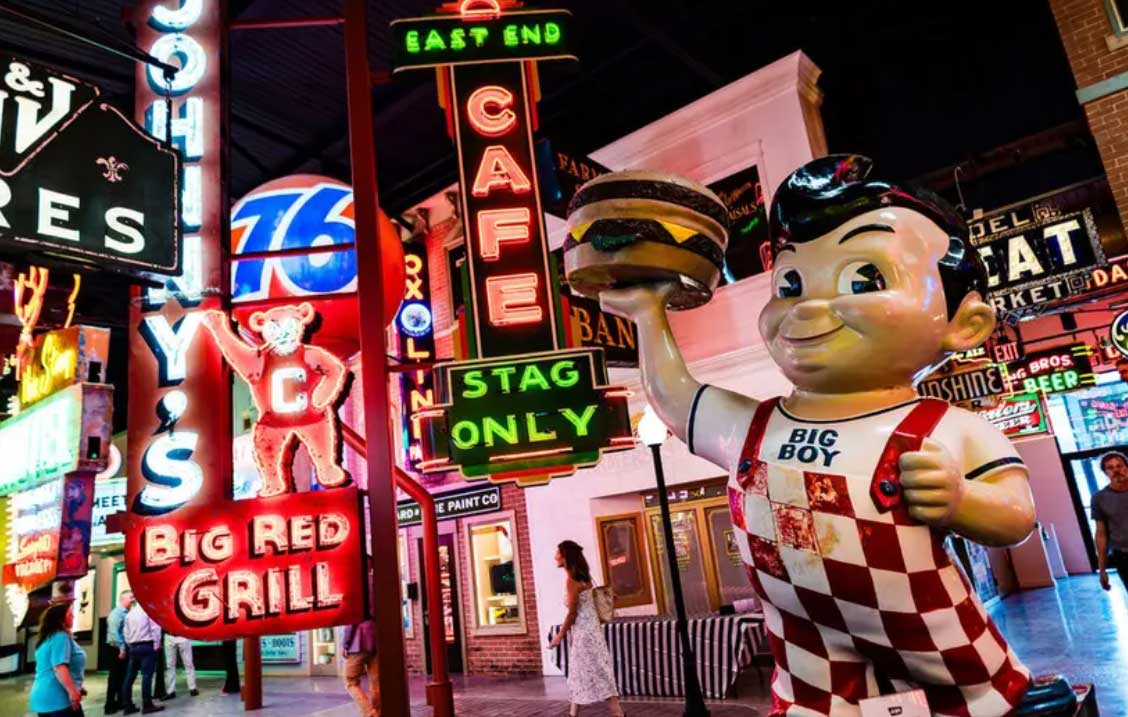
Cincinnatti’s American Sign Museum
Cincinnatti’s American Sign Museum isn’t just a spot for neon signs; it’s a place where a Big Boy can just be himself. (Image courtesy of The American Sign Museum)
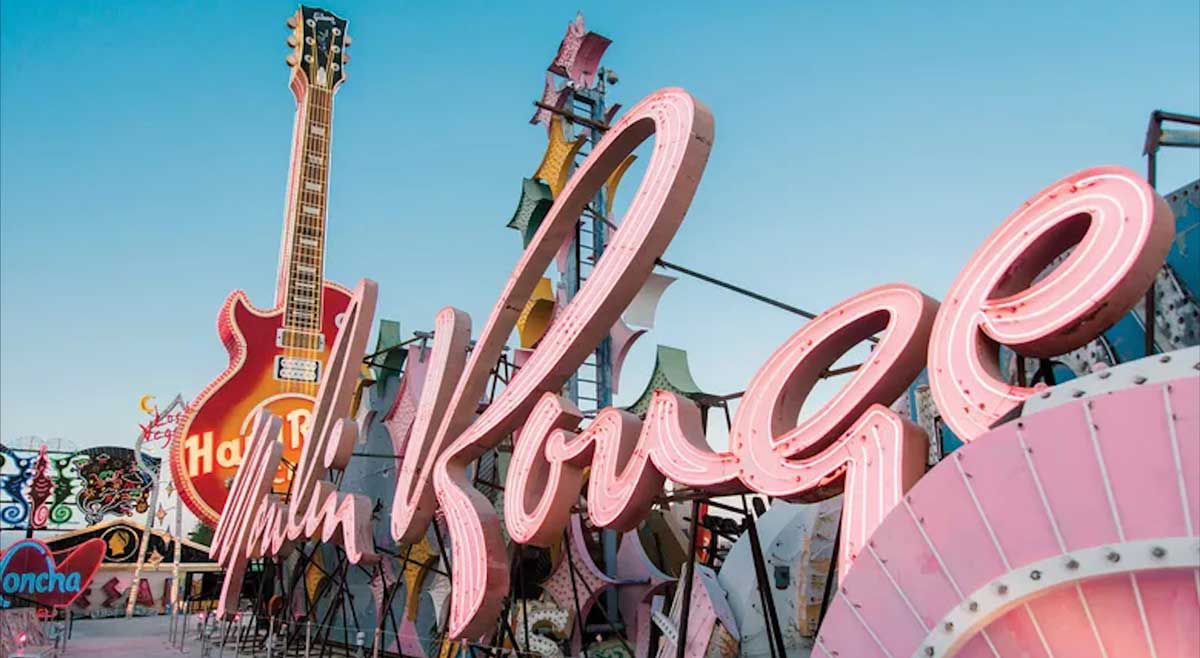
Moulin Rouge sign
The Moulin Rouge sign on display at the Neon Sign Museum in Las Vegas. (Image courtesy of Travel Weekly)
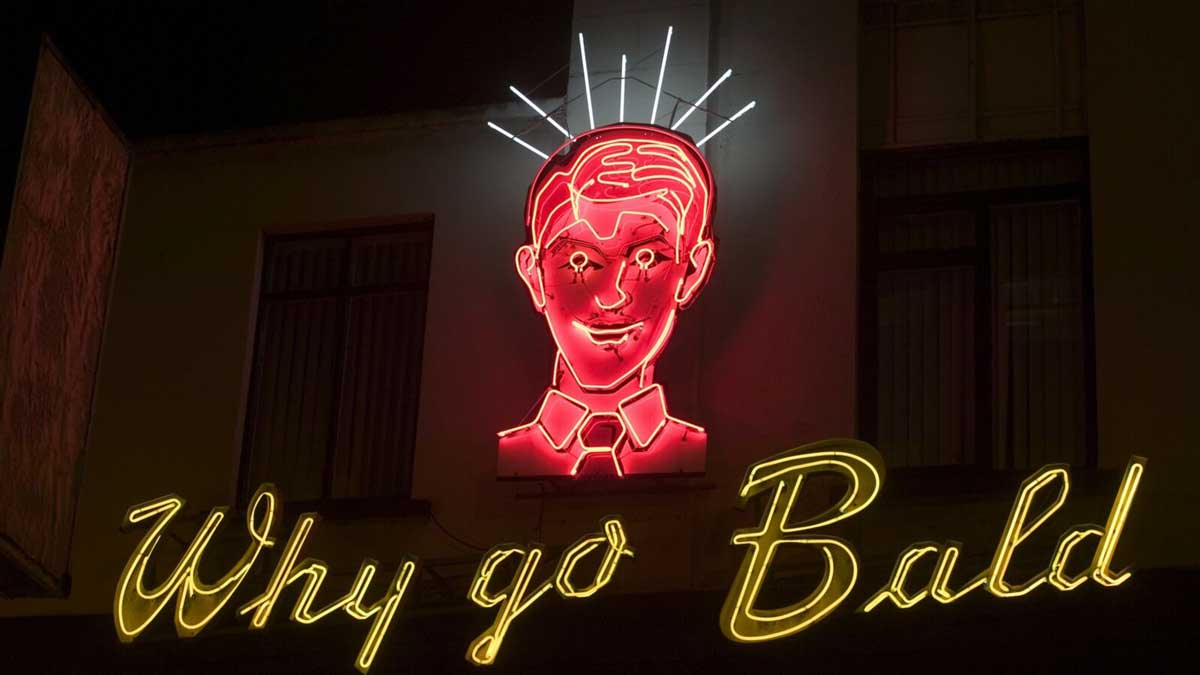
Hairdresser’s business sign in 1912 in Paris
The very first neon sign was created for a hairdresser’s business in 1912 in Paris. This contemporary sign, however, is one of Ireland’s most well-known. (Image courtesy of The Irish Times)
Part of the local culture
“Neon signs’ popularity dipped around World War II due to the war, but in the booming 1950s, neon was revived again with the Doo Wop style of design in architecture,” according to the New Jersey-based “Preserving the Wildwoods” blog. “Large, garish neon signs were used to draw customers into restaurants, commercial businesses, and motels. Towns like Las Vegas and the Wildwood became defined by their use of neon signs.”
The neon sign’s popularity reached its peak in the 1950s, with roadside motels increasingly using them to advertise vacancies. Beginning in the 1960s, however, neon signs began to fall out of favor with advertisers and consumers alike.
“By the mid-20th century, neon signage began to wane due to the rise of cheaper LED technologies, changing advertising trends, and urban decay in certain areas,” according to Neon Creations.
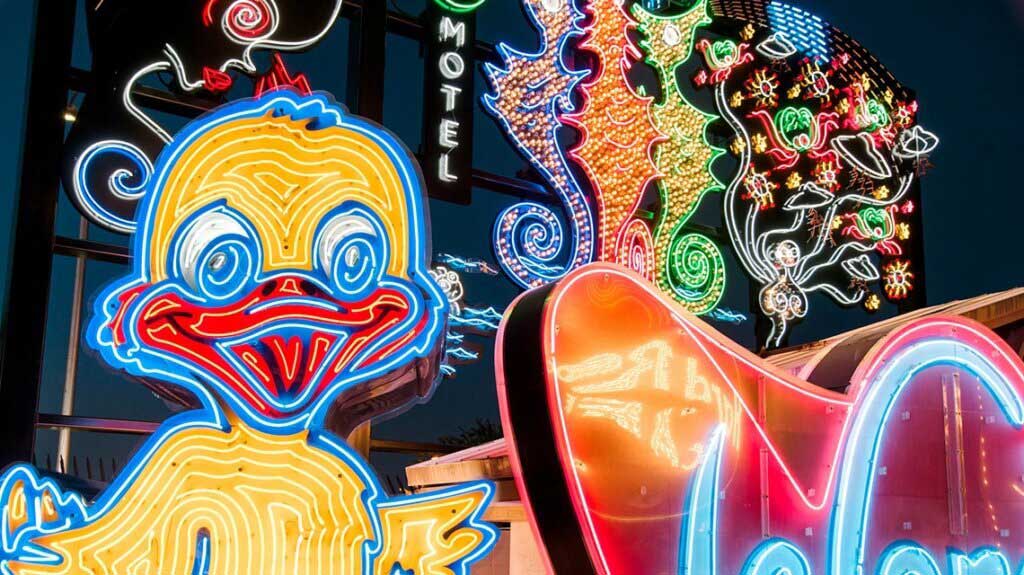
Las Vegas-based Neon Museum
The Las Vegas-based Neon Museum’s permanent collection includes more than 200 signs. (Image courtesy of Travel Nevada)
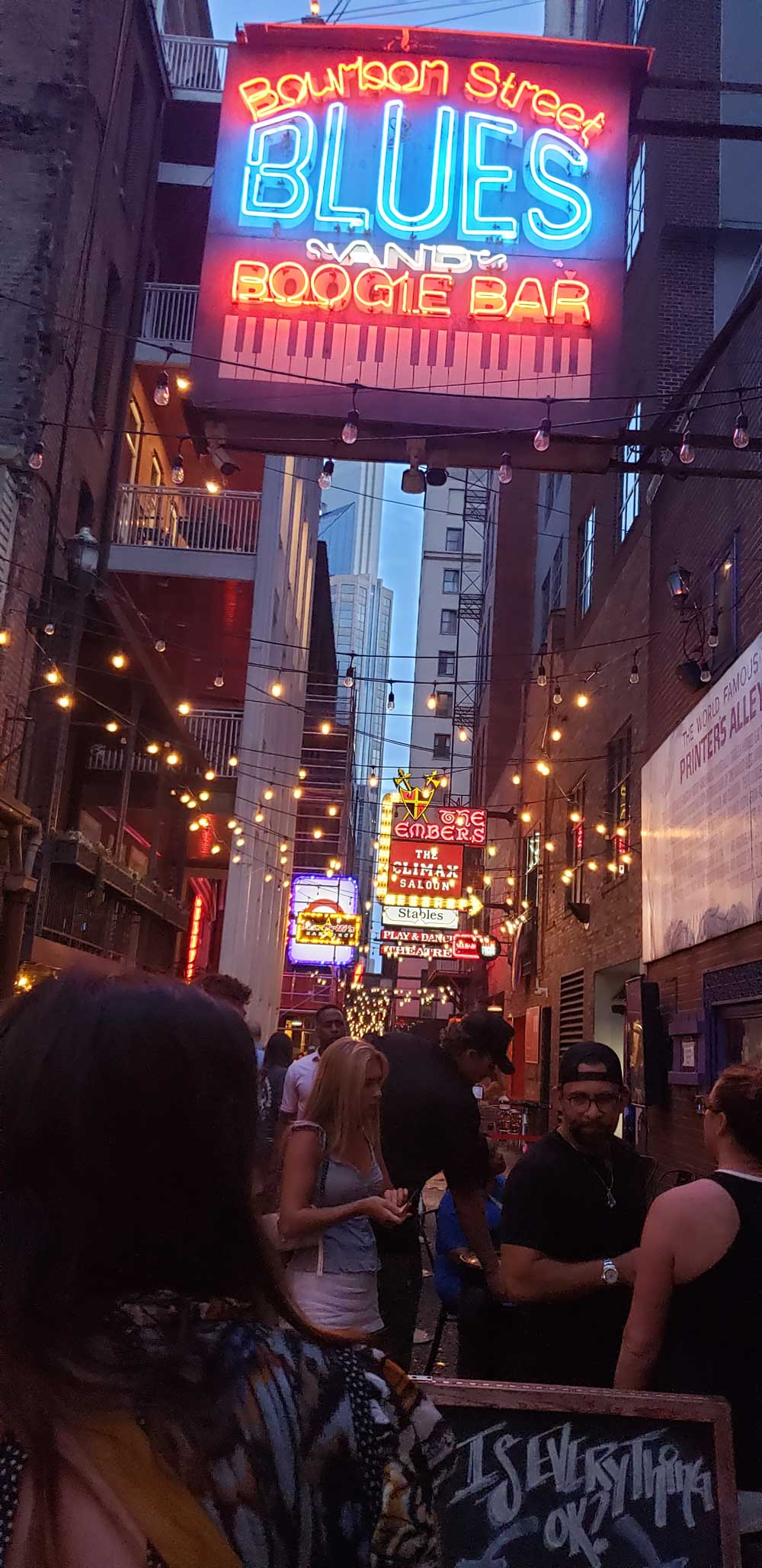
Printer’s Alley in Nashville, TN
Neon signs create a fun, party atmosphere to an area, like Printer’s Alley in Nashville, TN. (Photo by Patti Klinge)
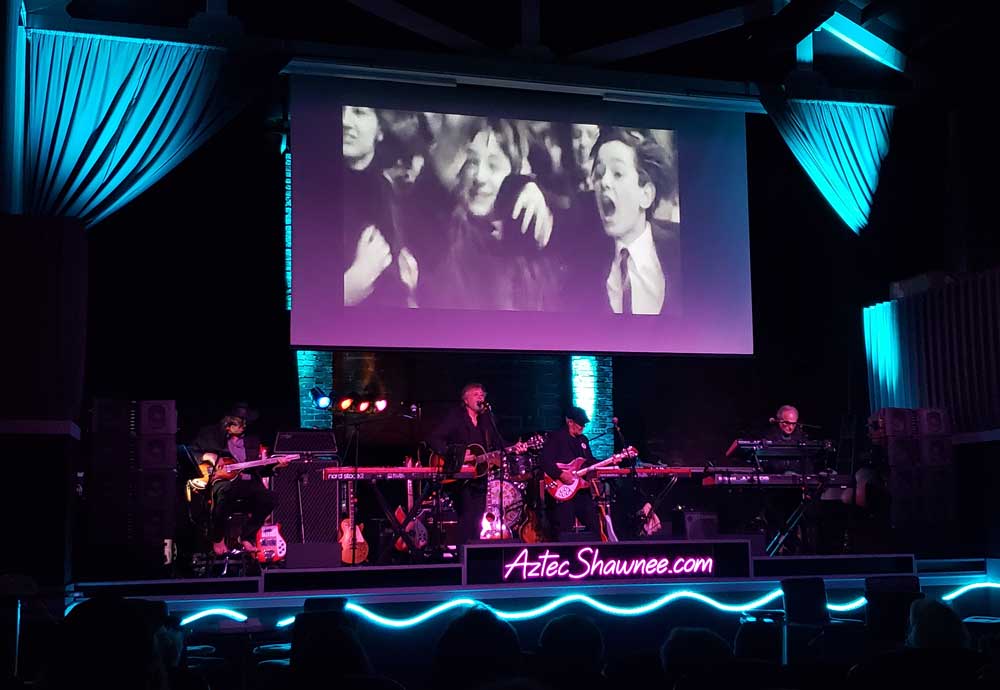
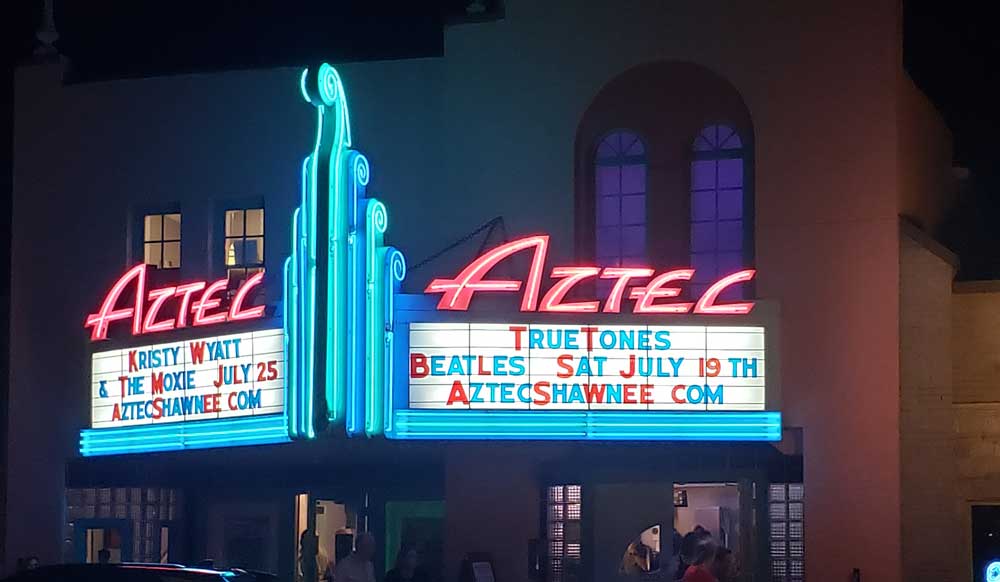
Aztec in Shawnee, KS
Some things never go out of style. Theaters, like the Aztec in Shawnee, KS, proudly sport neon signs (inside and out) for the nostalgic vibe. (Photos by Patti Klinge)
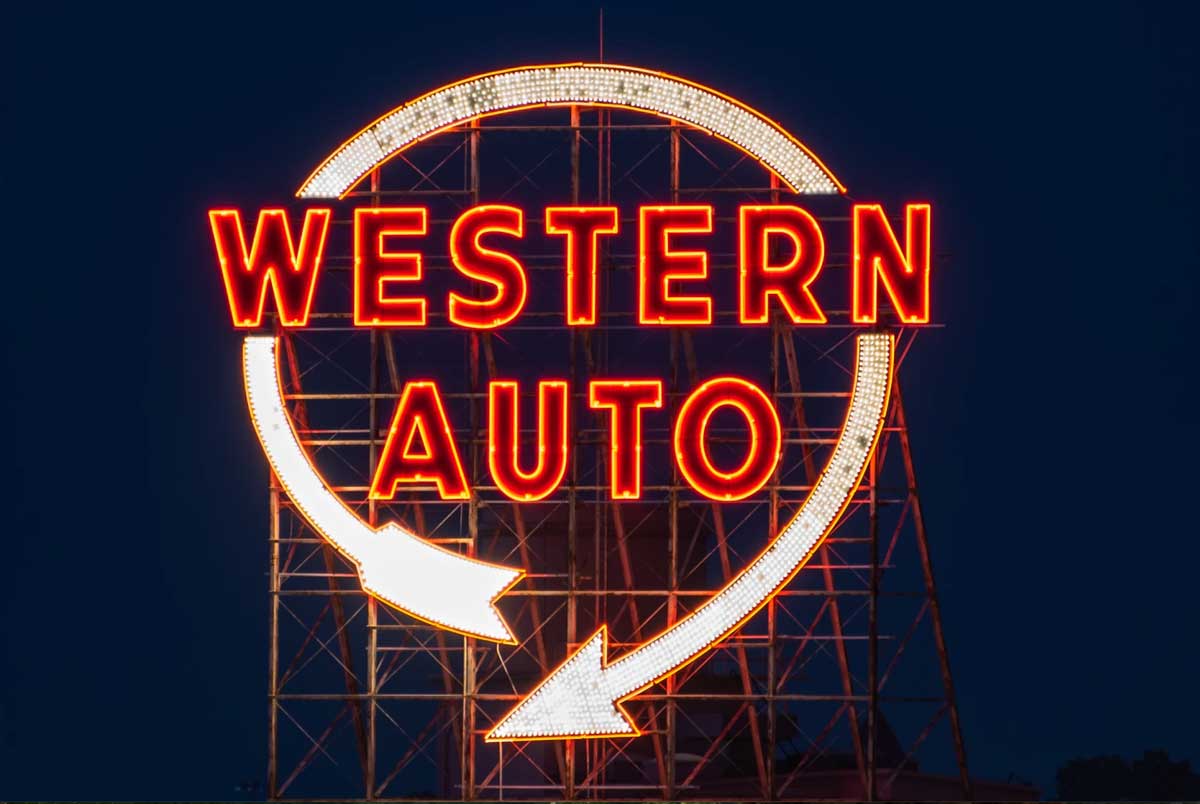
Western Auto neon sign
The Western Auto neon sign is a Kansas City landmark. (Image courtesy of Wikimedia Commons)
Pointing toward a comeback
But as anyone interested in anything vintage knows, the power of nostalgia is strong. In fact, Neon Creations’ blog states that neon is “experiencing a renaissance – not just as retro urban décor but as an admired art form.”
Nowhere is that more evident than in two museums dedicated to the history and preservation of signs. The first, the American Sign Museum in Cincinnatti, offers guided tours and even a neon sign demonstration in which museum attendees may watch an actual neon sign being made. The museum was founded in 1999, its permanent collection experiencing an explosive growth in the first decade of its existence. Today, the museum’s permanent collection includes more than 4,000 pieces spanning roughly 100 years of signmaking, from the late 19th century to the 1970s. Of those 4,000 pieces, which include photographs, documents, ephemera, letters, and signs themselves, neon signs account for several hundred pieces. Those signs include company logos in a variety of fonts, as well as images like animals and mascots.
According to a 2008 article from USA Today, some of the museum’s highlights include a rotating neon windmill from a doughnut shop in Denver.
Neonworks of Cincinnatti moved its business into the museum several years ago and features a live exhibit showing visitors how a neon sign is restored, according to Cincinnatti’s FOX 19 News.
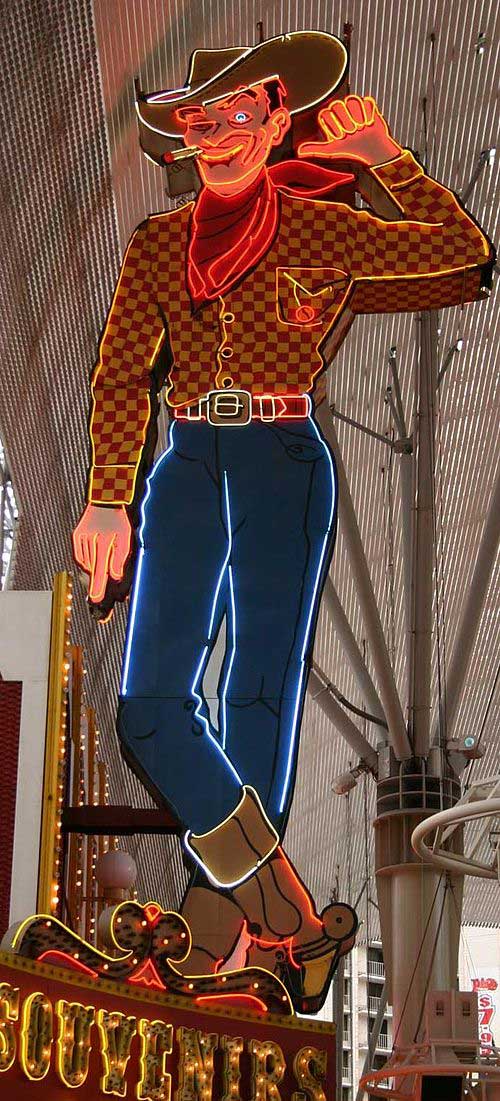
Vegas Vic sign
The Vegas Vic sign, erected outside the Pioneer Club in Las Vegas in 1951. (Image courtesy of Wikimedia Commons)
The Strip with style
When in Las Vegas, be sure to check out The Neon Museum, which officially opened in 2012 but had been in operation for nearly a decade prior. Its centerpiece is the lobby of the former La Concha Motel, relocated to the museum a few years before its public opening, with the museum saving part of the motel’s sign as well.
The Neon Museum boasts more than 200 signs; just last year, museum officials announced that the museum will relocate to two larger sites nearby; that will happen by 2027.
According to a 2005 article in The Las Vegas Review-Journal, the Utah-based Young Electric Sign Co. (YESCO) produced many of the Strip’s neon signage. In the 1960s and ‘70s, as neon began to fall out of favor, some Vegas residents advocated to save the signs, which now were in danger of being taken down. The next two decades were dedicated to researching possibilities for a neon sign museum; the city council approved funding in 1996, and the project was initially focused on the reinstallation of old neon signs along North Las Vegas Boulevard.
In the beginning, the Neon Museum only welcomed a little more than 1,000 tourists each year. By 2023, that number had ballooned to 200,000 (the museum had become so popular that it had to turn away tens of thousands of people due to tours being sold out).
If you’re one of the fortunate tourists to nab a tour time, you’ll be able to view signs from the hotels and casinos of vintage Vegas – The Flamingo. The Stardust. The Tropicana. The El Cortez. The Moulin Rouge. And the list goes on. The museum features 250 pieces in its permanent collection, with the oldest dating from the 1930s.
“When we first began, we would have to call and ask for someone to donate a sign,” then-President and CEO Rob McCoy said in 2016. “We no longer have to do that. When a building is ready to get shut down or be imploded, we’re one of the first calls they make. They want us to have the signs.”
For more information on both museums, visit www.americansignmuseum.org and www.neonmuseum.org.


